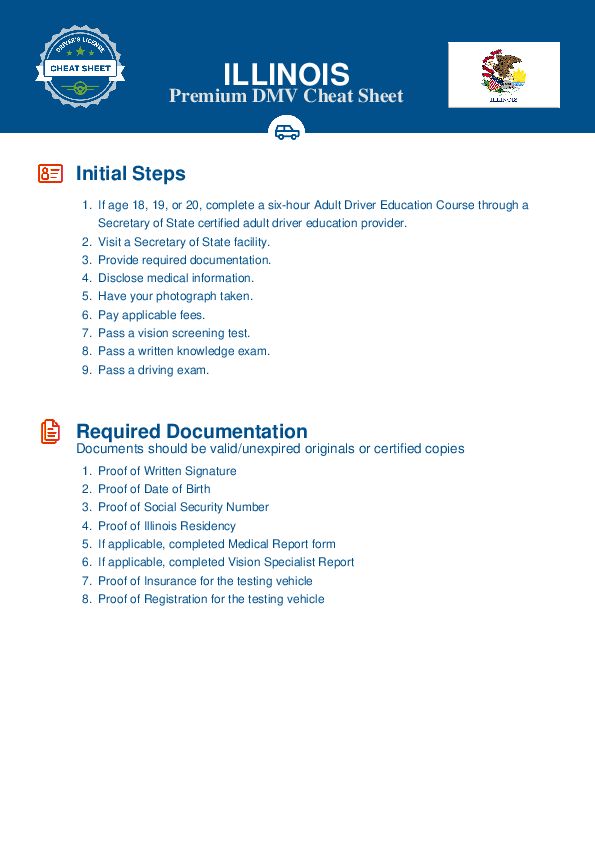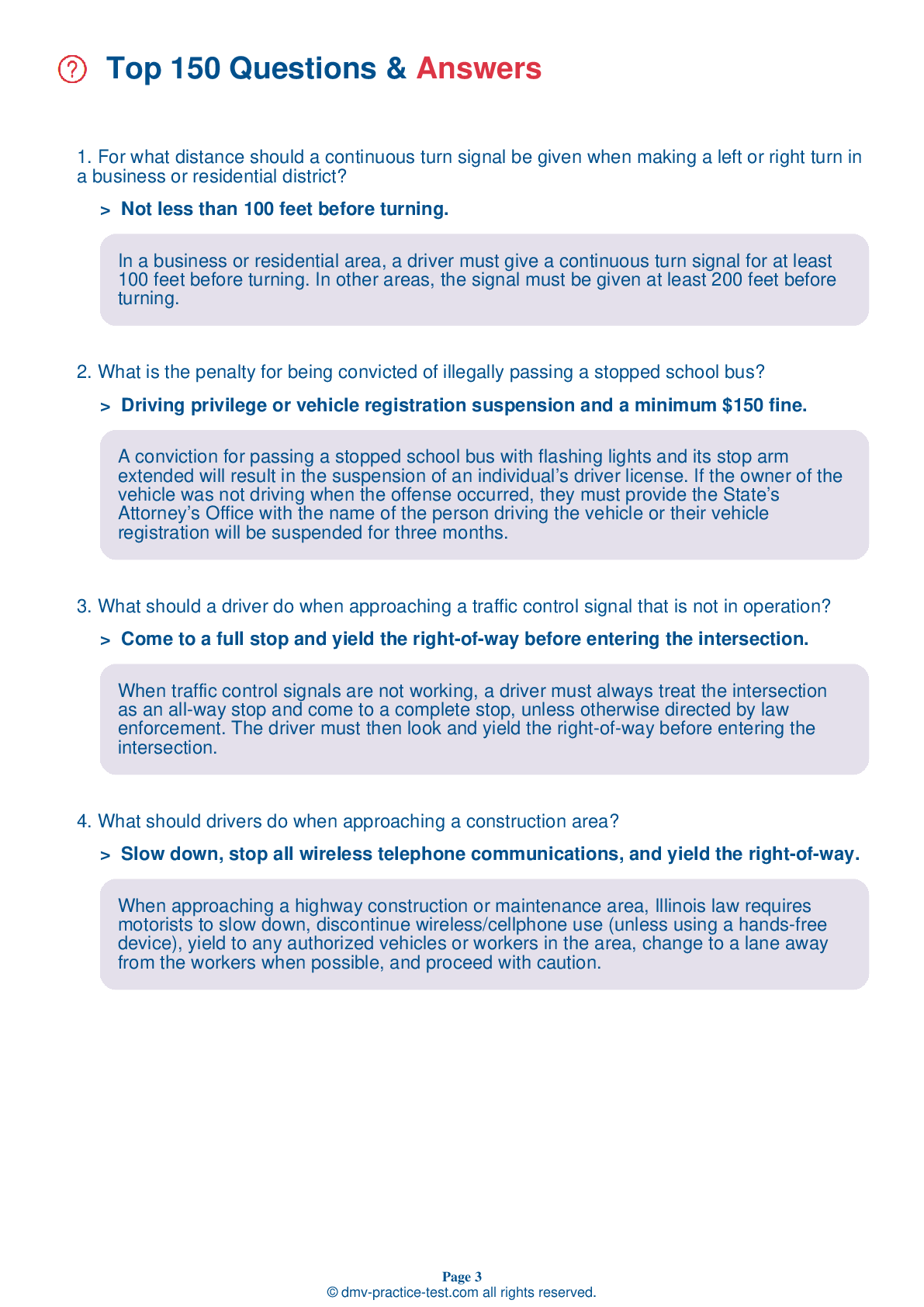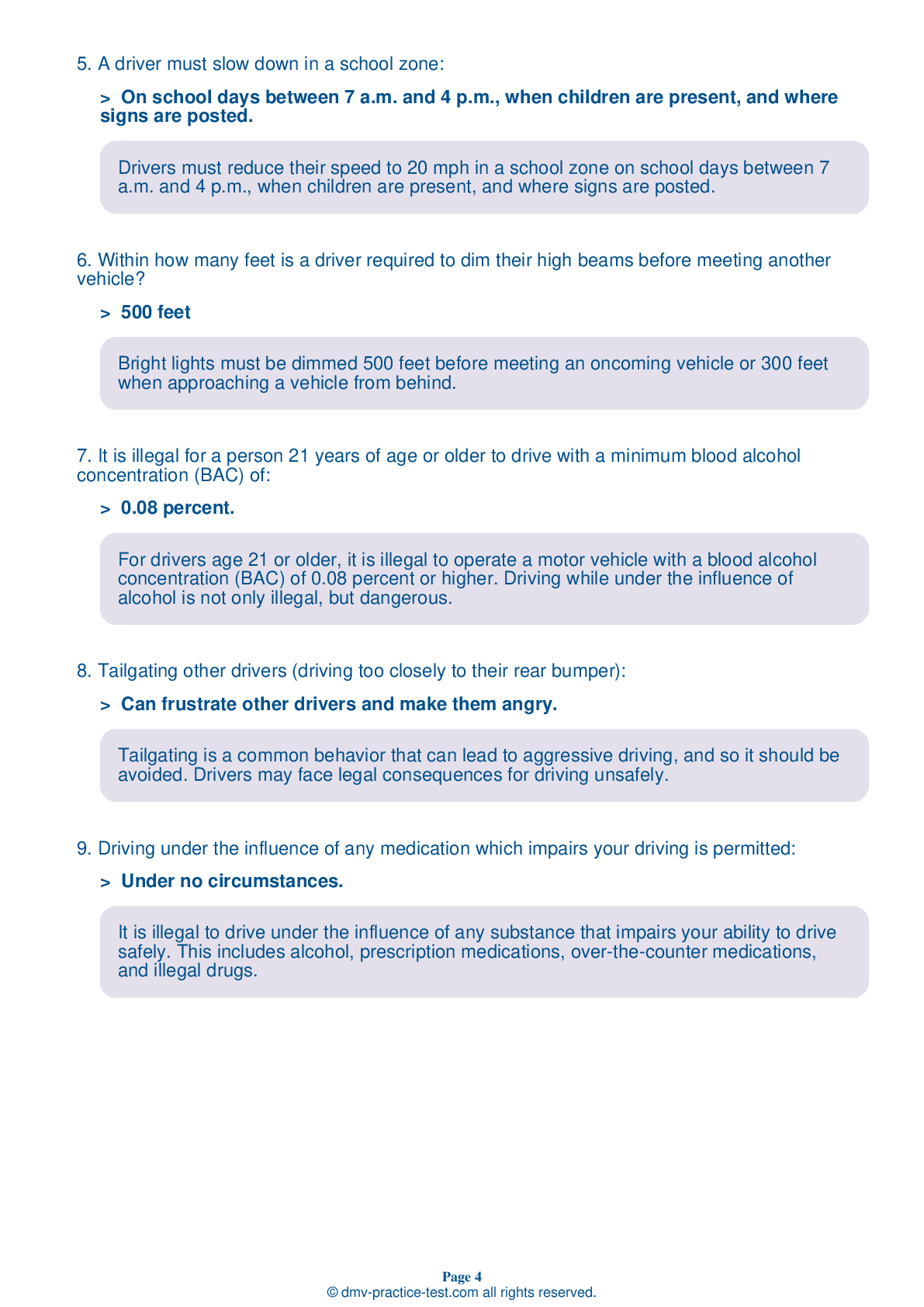FREE Illinois DMV Practice Test #15 Page 3 of 3
For January 2026, this set of Illinois DMV practise tests has been updated. It includes questions based on the most important traffic signs and rules for 2026 from the Illinois Driver Handbook. To study for the DMV driving permit test and driver's licence exam, use actual questions that are very similar (often identical!) to the DMV driving permit test and driver's licence exam.
Each question on the practise exam has a tip and explanation to help you recall the ideas. Questions about traffic rules, traffic signs, and driving statutes, as well as information from the Driver Handbook, will be included in the written portion of the official DMV test.
You must properly answer 38 of the 35 questions to receive a passing mark. To help you prepare for your Illinois instruction permit or driver's licence, take our DMV practise test.
The DMV exam is offered in a variety of languages.
Using any form of testing help will result in an automatic fail, and the DMV may take further action against your driver's licence, so avoid it.
25 . This sign means:
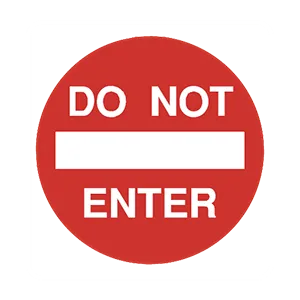
This sign is posted on one-way streets and other roadways where a driver is not allowed to enter. A driver may see this sign if attempting to enter an expressway ramp in the wrong direction.
26 . In inclement weather, you should:
When driving during unfavorable weather conditions, avoid slamming on the brakes and making sharp, quick turns. These behaviors will make controlling your vehicle in inclement weather even more difficult.
27 . The amount of alcohol in the blood is referred to as:
Blood alcohol concentration (BAC) is a measurement of the percentage of alcohol in the blood. The higher the BAC number, the more impaired a person is.
28 . This sign means:
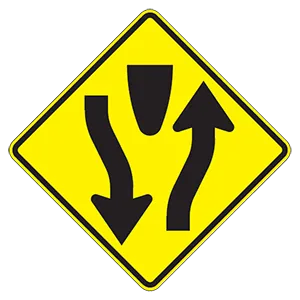
This sign indicates that a divided highway begins ahead. Keep to the right of the median divider.
29 . On a freeway, you should look farther ahead than you would on a city street:
On the freeway, be ready for changes in traffic conditions. Watch for signals from other drivers. Expect merging vehicles at on-ramps and interchanges and be prepared for rapid changes in road conditions and traffic flow.
30 . This sign means:
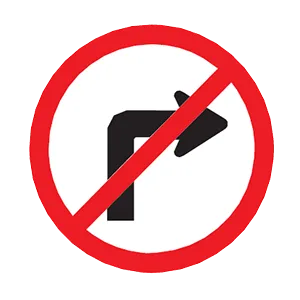
Signs with a red circle and diagonal line over a black symbol indicate the the action represented by the symbol is prohibited. In this case, the sign indicates that right turns are prohibited.
31 . Speeds should be reduced below the posted speed limit for which of the following reasons?
Regardless of the posted speed limit, weather and traffic conditions may make it necessary to drive more slowly. A driver must take care to slow down when approaching and crossing an intersection, going around a curve, approaching the top of a hill, or traveling on a narrow and winding roadway. A driver must be aware that there may always be dangers present due to pedestrians, traffic, weather, mechanical problems, or road conditions.
32 . This road sign means:

Warning signs are usually yellow with black markings. This sign indicates that there could be traffic merging from the right, so drivers should prepare to allow traffic to safely merge.
33 . A red arrow pointing to the right on a traffic light means you may:
A red arrow means "stop." You must remain stopped until a green light or green arrow appears. Do not turn against a red arrow.
34 . If a vehicle starts to skid on water, the driver should quickly apply the brakes.
If a vehicle skids while hydroplaning, the driver should try to regain control of the vehicle. If that is not possible, the driver should release the accelerator and ride out the skid. The driver should not immediately apply the brakes.
35 . This road sign means:
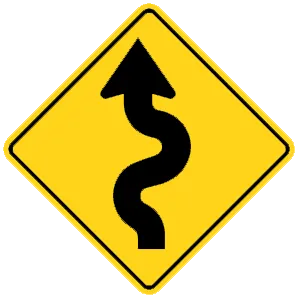
Warning signs are usually yellow with black markings. This sign warns the driver that there is an upcoming winding road. Speed should be adjusted appropriately.
Need Car Insurance? No problem!
Compare the best rates in Illinois and find a personalized policy that meets your needs.
1. Are You Currently insured ?
2. Married ?
3. Do you own your Home?
4. Do you have more than 1 car ?
5. Have you or a Family Member Honorably Served in U.S. Military ?
6. Your Name
7. Age
8. Zip code
IMPORTANT REMINDER:Auto Insurance is Mandatory to drive in Illinois. Get covered before you hit the road to avoid any fines.
Ranked by best match
